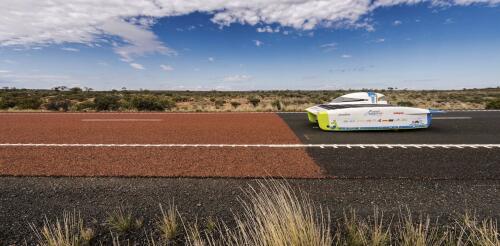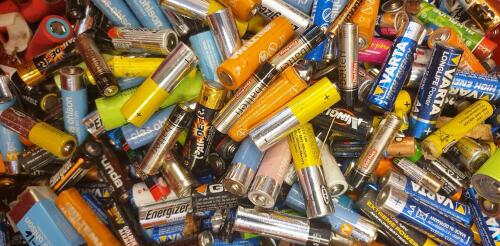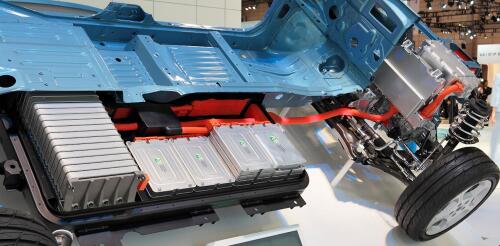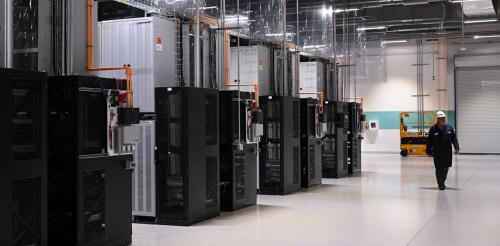Batteries
Curious Kids is a series for children of all ages. If you have a question you’d like an expert to answer, send it to curiouskidsus@theconversation.com. Why aren’t there solar-powered cars? – Emma, age 16, Springville, Utah Solar cars exist. The best place to see them is the World Solar Challenge, a race that’s held every two years in Australia. Competitors have to drive about 1,870 miles (3,000 kilometers), from Darwin on the country’s north coast to Adelaide on its south coast, using only energy from the Sun. Many cars that compete in this race look more like amusement park rides or science fiction vehicles than the cars you see on the road. That tells you something about why solar cars aren’t an option for everyday travel, at least not yet. Collecting enough sunlight While a lot of sunlight falls on Earth during the day, the light becomes scattered as...
If you’ve looked in your utility drawer lately, you may have noticed the various shapes, sizes and types of batteries that power your electronic devices. First, there are the round, non-rechargeable button cells for your watches and small items. There’s also the popular AA and AAA cylindrical batteries for calculators, clocks and remotes. Then you have the rechargeable lithium-ion batteries in your laptops and phones. And don’t forget about the lead-acid battery in your car. I’m a professor who studies batteries and electrochemistry. To understand why batteries come in many different sizes and shapes – and serve many purposes – look to the past, at how batteries originated and how they have developed over the years. The first batteries were made in the 1800s, and they were quite simple. One of the first demonstrations was a series of metal discs soaked in brine, which Italian scientist Alessandro Volta found created an electric current. The f...
In a newly published study, we describe our design for a self-extinguishing rechargeable battery. It replaces the most commonly used electrolyte, which is highly combustible – a medium composed of a lithium salt and an organic solvent – with materials found in a commercial fire extinguisher. An electrolyte allows lithium ions that carry an electric charge to move across a separator between the positive and negative terminals of a lithium-ion battery. By modifying affordable commercial coolants to function as battery electrolytes, we were able to produce a battery that puts out its own fire. Our electrolyte worked well across a wide temperature range, from about minus 100 to 175 degrees Fahrenheit (minus 75 to 80 degrees Celsius). Batteries that we produced in the lab with this electrolyte transferred heat away from the battery very well, and extinguished internal fires effectively. We subjected these batteries to the nail penetration test, a common method for ass...
After nearly two decades of stagnation, U.S. electricity demand is surging, driven by growing numbers of electric cars, data centers and air conditioners in a warming climate. But traditional power plants that generate electricity from coal, natural gas or nuclear energy are retiring faster than new ones are being built in this country. Most new supply is coming from wind and solar farms, whose output varies with the weather. That’s left power companies seeking new ways to balance supply and demand. One option they’re turning to is virtual power plants. These aren’t massive facilities generating electricity at a single site. Rather, they are aggregations of electricity producers, consumers and storers – collectively known as distributed energy resources – that grid managers can call on as needed. Some of these sources, such as batteries, may deliver stored electric power. Others may be big electricity consumers, such as factories, whose owners ha...
In today’s electronic age, rechargeable lithium-ion batteries are ubiquitous. Compared with the lead-acid versions that have dominated the battery market for decades, lithium-ion batteries can charge faster and store more energy for the same amount of weight. These devices make our electronic gadgets and electric cars lighter and longer-lasting – but they also have disadvantages. They contain a lot of energy, and if they catch fire, they burn until all of that stored energy is released. A sudden release of huge amounts of energy can lead to explosions that threaten lives and property. As scientists who study energy generation, storage and conversion, and automotive engineering, we have a strong interest in the development of batteries that are energy-dense and safe. And we see encouraging signs that battery manufacturers are making progress toward solving this significant technical problem. Avoiding overcharging is one way to reduce the ris...




